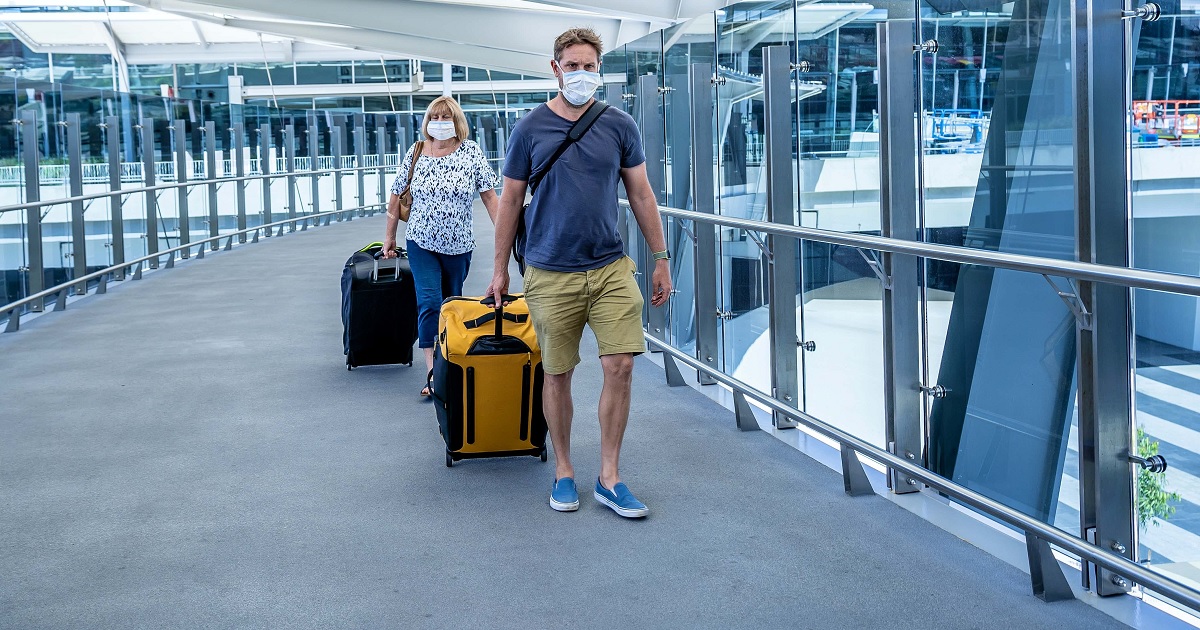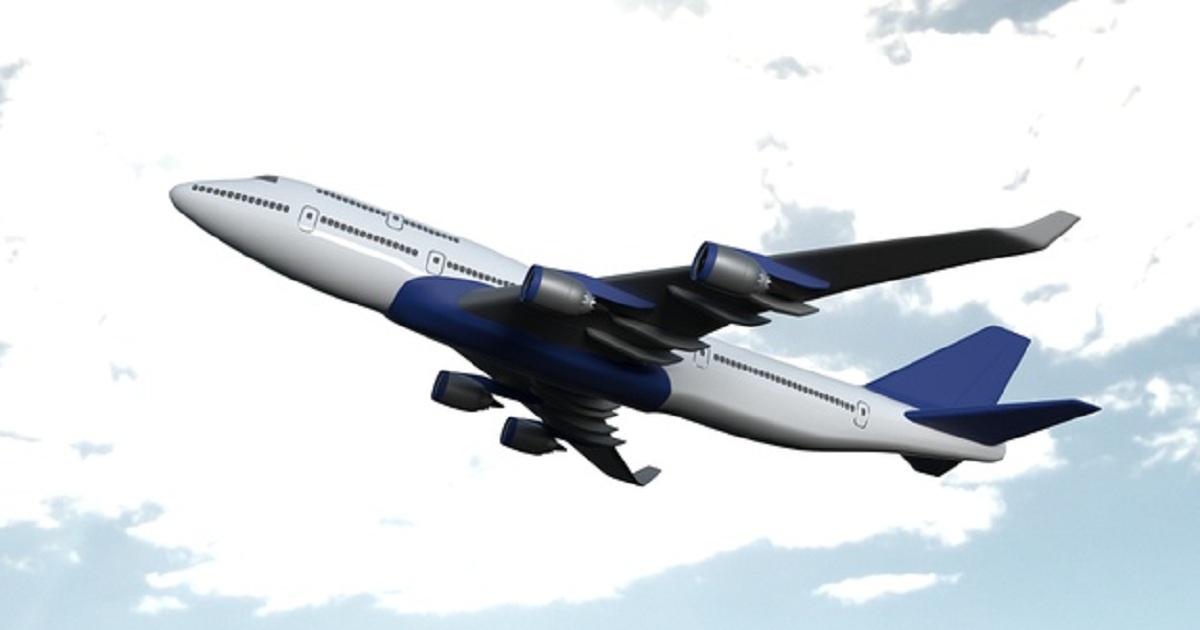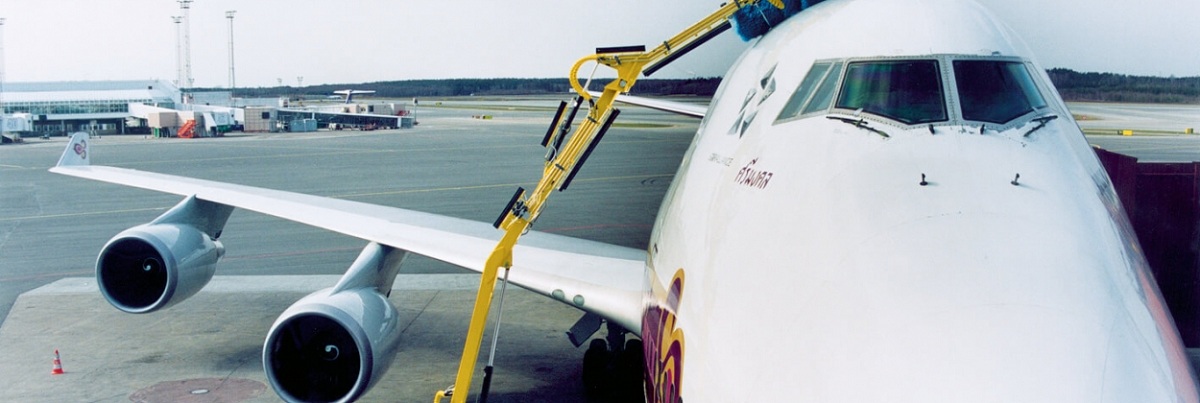
Defense and Space
Article | June 8, 2022
Flying is changing, and so is the future of piloting. With technological advancements across the aviation industry, one can only anticipate what’s in store for the future of piloting. The battle between automation and learning skills that automation can easily take over is coming to a head. As airplane engineering matures, the aviation industry isn’t far from seeing a day when pilots who have undergone training on electric trainers require a license endorsement to fly a piston-powered aircraft.
Goodbye, Manual Flying
Airplanes are becoming downright easier to fly. Consider how most pilots today would never be able to fly the aircraft that their seniors trained in. According to experts, piloting skills will put more emphasis on the efficient use of airspace systems instead of directing and maneuvering the aircraft.
Decoding Airplane Information
Traditionally, a pilot’s primary task was to gather and decode the information he received through the aircraft’s systems. This information was then used to give the pilot an “air picture” which allowed him to get a sense of the air traffic, airspace, and weather. As aircraft technology improves, pilots will no longer need to know how to do this. Instead, the "air picture" will be shown on a screen in front of them.
Final Word
From augmented reality to 3D spatial audio cues, augmentation is happening to aircraft as well as the pilot’s ability to fly them. The evolution of aviation technology will only help transform the mechanics of airplanes, and pilots will no longer need to handle flight control. As augmented reality takes over, future cockpits might not even need to be at the front of the aircraft or have windows. That would be the true test of the future of piloting.
Read More

Air Transport
Article | July 6, 2022
As 2021 is a few months away from its end and is the beginning of a new year, it is hopeful that it will bring more positiveness for airline businesses. But what the industry has ahead? How will the new landscape of technology strategies in airline businesses look?
Or say, what will be the platforms for novel technology strategies in the aviation industry in the future?
Let’s have a quick read in the next!
What Airline Technology Strategies Will Look Like?
As you know, the airline industry saw a lot of disruption in 2020. But the circumstance also paved the way for promising and powerful new technologies.
Airline businesses are now turning the tech trends to their advantage. In this way, they can get a handful of opportunities to streamline operations. They could do this because the landscape of technologies is reshaping aviation.
For example, IATA recently calculated that the airline's revenue worldwidewould be more than half of what it was in 2019. That means the industry will witness a massive change due to emerging tech stacks. Its rising importance is influencing market leaders to make more informed decisions today. This is why it is critical to imply technology strategies in your business.
Thus, the focus is on the clients' strategic choices and investments. It will now depend on the implications of technology strategies.
How will some of the applied proactive technologies in business processes look like in the new normal?
This blog groups some of the newer technologies for the new normal in aviation. Explore them and take inspiration from the potential of technologies to revive your business and drive growth.
5 Tech Strategies to Reshape Airline Industry
Machine Learning with AI
Before the pandemic, the airline industry displayed an exceptional commitment to the potential of AI. Like, you must have seen the adoption of chatbots to communicate and other ways to improve operations.
Now, the usage of AI is soared, and its application is more profitable than before. The platform analyses a faster deployment of millions of operational data.
Mechanization
Mechanization technology in the airline industry is gaining thrust. Due to the rapid developments and advancements, several airline businesses are implementing it. As tools are becoming smarter, businesses will soon have completely automated operations. Automation will ease all the workloads, reduce manual intervention and errors to a high accuracy rate.
Real-Time Information Technology
Real-time information technology is a significant technological aviation strategy. It has the potential of improving airlines’ operation efficiency with the help of customized software usage.
Your business can drive growth by implementing custom software applications. But, as you know, to deliver customized and personalized solutions, it is essential to understand clients’ expectations and preferences. So, how is this technology going to take you through it? Let’s understand in the following ways:
Personalized solution: Custom software applications are developed with the help of the updated information collected by knowing customer’s preferences. In this way, you can create personalized or customized solutions for your clients.
Technical Excellence: Having an expert development team across all application stages is a plus in your business. The cutting-edge tools will benefit from fulfilling clients’ demands
Higher business value realization: It's critical to properly align real-time information technology with your business processes. This will deliver solutions on time with the right approach to your client. This way, your business can generate higher value and build trust in long-term relationships with clients.
Analytics
Analytics is the most urgent technological need for airline businesses in the future. Aacquiringe accurate data, predicting losses, and evaluating clients’ needs will be the next transformational scenario in the airline industry.
Implementing this technology will allow airlines to streamline their operations ahead of time. It will also help to take realistic measures to bring down losses that occurred due to the pandemic.
Analytics are also effective in predicting and preparing for the results of business efforts. Data-backed analytics would provide insights to pinpoint geo-specific interventions to gain higher ROI.
Agility
The implementation of technology strategies has encouraged airline businesses to become agile. At the same time, some leading industry market players have now shifted their business to operate in agility. So, it's expected that this trend will continue beyond 2021.
The aviation industry caters to a vast array of products and services. It works to deliver seamless operations and services. The adaptation of agility requires multiple systems to interact and exchange data. So, with the growing rate of partnerships, agility is the need of the hour.
Today, in several airline businesses, teams work in separate locations. Being agile helps them to win adverse circumstances. It also builds the trust of audiences by keeping transparency in work and responding to queries faster.
With this, the emerging technology is also expected to help track the progress of smaller efforts and proactively handle the metrics for projects coming in. In addition, the technology ensures that you can constantly inspect functions and deliver quality products or services.
Lastly, since the budget is one of the top concerns of airline businesses, the development of agile technology strategies helps to keep a check on expenses. Therefore, by tracking the expenditure, it will be easier to plan future budgets adequately.
Frequently Asked Questions
What are other critical new technologies that will transform aviation?
According to IATA’s report, the aviation industry will witness a drastic transformation. Some important new technologies such as cybersecurity, 3D printing in manufacturing, robotics, and biometrics will enter in the future.
How has technology enhanced the aviation industry?
Technology has enhanced aviation in manufacturing. New techniques have created new aircraft with improved fuel consumption and reduced environmental impact. In terms of operation, automation and AI are the new takeovers in aviation.
Why is technological development important for aviation?
Technological development is important to improve the efficiency of airline operations. The need for better connectivity, enhanced travel experience, reduced fuel costs, budget alignment, control over expenses has urged technology to step in.
{
"@context": "https://schema.org",
"@type": "FAQPage",
"mainEntity": [{
"@type": "Question",
"name": "What are other critical new technologies that will transform aviation?",
"acceptedAnswer": {
"@type": "Answer",
"text": "According to IATA’s report, the aviation industry will witness a drastic transformation. Some important new technologies such as cybersecurity, 3D printing in manufacturing, robotics, and biometrics will enter in the future."
}
},{
"@type": "Question",
"name": "How has technology enhanced the aviation industry?",
"acceptedAnswer": {
"@type": "Answer",
"text": "Technology has enhanced aviation in manufacturing. New techniques have created new aircraft with improved fuel consumption and reduced environmental impact. In terms of operation, automation and AI are the new takeovers in aviation."
}
},{
"@type": "Question",
"name": "Why is technological development important for aviation?",
"acceptedAnswer": {
"@type": "Answer",
"text": "Technological development is important to improve the efficiency of airline operations. The need for better connectivity, enhanced travel experience, reduced fuel costs, budget alignment, control over expenses has urged technology to step in."
}
}]
}
Read More

Business Aviation
Article | December 28, 2021
There’s been a lot of talk lately about airlines around the world beginning to favor smaller aircraft. Not just amid the pandemic but for the foreseeable future as well. The debate was given fuel when Lufthansa’s CEO made comments about potential down-gauging of its fleet ahead. But have we really entered the era of smaller airplanes for good?
Many have argued that even when demand for air travel does return there will be less of it overall because of a precipitous and permanent drop in business travel. And beyond that, even where demand does exist, it will be for convenient, point-to-point service, not on A380s via big hubs – as smaller planes emerge that are capable of flying farther and people shy away from big, crowded airports and the hassle of connecting. All of which calls for smaller planes. I’ve argued recently that this seems a little hasty. Nevertheless, the jury is out, and as they say – only time will tell.
Have smaller planes taken over flying?
One thing we can look at is whether the notion that smaller planes rule the day holds true at major airlines right now. And pulling some Flightradar24 data we can see that this has been happening – mostly. The headline takeaway seems to be that bigger planes do still have their place, but for obvious reasons smaller wide-bodies have proven more desirable on many global routes during the past year.
Lufthansa dropped its Very Large Aircraft quickly
If we look at Lufthansa’s data, the trend is very clear right from the beginning of the pandemic. The A380 and the 747s (both -400 and -8I) took a definitive hit beginning in March 2020. That was it for the A380 and the 747-400 for good, it seems. The small rebound in A380 flights recorded in recent months were storage-related. And since the pandemic started, it’s clear that the smaller A330 has been clearly favored, taking up nearly double the percentage of flying it had at Lufthansa pre-pandemic.
What’s most interesting here is that the 747-8I did come back, in some weeks to pre-pandemic levels. That’s quite a big plane. It is probably hard to fill these days. But it is Lufthansa’s flagship now – it has a First Class cabin and it can carry quite a bit of cargo. As a result it kept flying for a while on the bigger US routes like LAX. However recent dips in demand, and the winter season, saw the smaller and more fuel-efficient A350 come in to replace it on many routes. As I write this the Lufthansa 747-8I is in flight on just two routes – Mexico City (MEX) and Buenos Aires (EZE) to Frankfurt (FRA).
If I were to take a guess, I’d say we continue to see the 747-8I for some time on these bigger routes and in busier seasons. It may turn out to be one of the last options for passengers to fly a 747 a few years from now. Eventually, though, the more efficient 777X will replace it. Though Lufthansa has said it’s looking to shift to smaller airplanes overall, the 777X seems a natural fit for its big hub to hub routes. I don’t think we’ll see a day when the A350 is the largest plane in Lufthansa’s fleet – at least as long as Germany remains Europe’s largest economy.
Delta favors smaller, but only by a little bit
If we look at Delta, which also has a wide range of wide-bodies in its fleet, the picture is a little more complicated. In part that’s because initially its 777s and A350s (both of which fit about 300 seats) took over quite a lot of flying while its smaller 767s (200 to 240 seats or so) were more or less parked.
Since then, however, the 777 fleet has been retired and the 767s (both -300 and -400 series) have been doing nearly 60% of Delta’s wide-body flying. And its smallest Airbus wide-body, the A330-200, has flown much less throughout the pandemic. The A330-300, A330-900neo and A350-900 have filled in the rest of the flying, but while they were doing a majority of the wide-body flying in the first months, they’re not back to flying roughly the same percentage of Delta’s wide-body flights as before the pandemic.
It’s interesting to note that a number of 767s have been retired during this time, and A330-300s have been used to fill the gaps where necessary despite having a higher seat count. If no 767s had been retired it’s likely the total percentage of flights run with the 767 would be even higher.
What’s the bottom line?
It seems that airlines have tended to park their biggest planes, but perhaps not as drastically as some might have expected. That may have had a lot to do with cargo capacity. But cargo capacity will continue to be a consideration post-pandemic as well, so it’s not as if these planes will prove useless once things get back to normal. And if we see the boom in travel demand that some are predicting is on the way, many of these larger aircraft may see they get plenty of use yet.
Will there be less very large aircraft in airline fleets overall? Yes, probably. The A380 is all but done for except at a handful of airlines. And will smaller, long-range planes like the 787 prove popular in the years ahead? No doubt. But the bigger, fuel efficient planes like the 777X and A350-1000 will almost certainly still have their place in the sky too.
Read More

Business Aviation
Article | May 12, 2021
Each year airlines begin new sustainability initiatives, experiment with biofuels, and offset their carbon emissions on selected flights; yet, sustainability should not only be a topic of discussion when an aircraft is in the air but also when it’s on the ground.
In just one year, a Boeing 777, 787, Airbus A330, and A350, burn an extra 265,000 litres of fuel due to the 1% increase in drag. As a result, a full year’s operations of such an aircraft costs US$77,600 more than during the previous year. A dirty aircraft exterior is full of microscopic patches of dust and mud that impact the airliner’s operational efficiency by creating turbulent airflow across the whole fuselage. While the problem of additional drag is not new, there are no solutions to combat it other than performing regular cleaning of the aircraft’s exterior.
Reducing drag – through cleaning – on aircraft fuselage, wings, engine cowlings, and stabilizer brings another challenge; how to remain sustainable while performing the exterior cleaning process? A popular, yet wasteful pressurized water cleaning technique requires more than 11,300 litres of water to clean one Airbus A380 aircraft and more than 9,500 litres to clean a Boeing 777. Traditionally, aircraft are cleaned four to five times per year, and with more than 48 thousand airframes in the world, the amount of water used each year is immense. As a result, the positives of clean fuselages are outweighed by the negatives of wasteful usage of expensive and environmentally important resources.
This raises a question: whether it is possible to be eco-friendly in the aviation industry when one solution brings even more challenges than benefits? While the answer may look complicated, the definite answer is yes. The use of robots in household applications has proven that robotification is an inevitable and much-needed process to achieve even more efficient operational performance.
One of the solutions to address the inefficient and time-consuming process of washing an aircraft fuselage is to employ an aircraft exterior cleaning robot. The market offerings like Nordic Dino, have been perfected and adapted to work with a wide range of aircraft fuselage types. Such robots are designed to minimize the use of water and detergent on every wash; saving more than 30% more water when compared to traditional washing methods. At the same time, built with sustainability in mind, the robots can be equipped with electric motors, further minimizing the environmental impact.
“Sustainability and eco-friendliness should not be viewed as challenges or impossible achievements in the aviation industry. By utilizing the right equipment, finding alternatives to polluting methods, and increasing efficiency at every step possible, companies could come one step closer to operational efficiency as well as sustainability targets. Our offering, Nordic Dino can reduce the use of water and detergent and can be powered by electricity, reducing carbon and nitrogen dioxide emissions. By the robotification of the cleaning process we present a solution to MROs and dedicated aircraft cleaning companies to become green.” – commented Jan Brunstedt, CEO of Aviator Robotics AB.
Read More